Plant Profile
Orchid
a.k.a. Orchidaceae
The Orchid is a popular indoor plant grown for its stunning flowers and elegant appearance. With over 20,000 species, Orchids are a diverse group of plants that come in a variety of colours and shapes. The plant features delicate, exotic-looking flowers that bloom for several weeks, adding a touch of beauty and grace to any room. Orchids are a little more challenging to care for, but with proper care and attention, they can be a rewarding addition to your indoor garden.
Top Tips
✔ Water orchids every 7-10 days, allowing the potting mix to almost dry out completely before watering again
✔ Place orchids in a bright, indirect light location, such as a north- or east-facing window.
✔ Orchids need high humidity levels to grow well. You can increase humidity levels around the plant using a humidifier or by placing the plant on a tray of pebbles filled with water.
Plant Care
-
Orchids thrive in bright, indirect light. They can tolerate some direct sunlight, but too much can cause the leaves to burn or the plant to overheat. The best place to keep an orchid is near a north- or east-facing window, where it gets plenty of bright, indirect light.
-
One of the biggest challenges of growing an orchid is getting the watering just right. Orchids need to be watered regularly but not too much; overwatering can lead to root rot, while under-watering can cause the leaves to wilt. A good rule of thumb is to water the plant every 7-10 days. Be sure to wait until the potting mix has almost dried out before watering again. When watering an orchid, it is best to use lukewarm water and avoid getting the water on the leaves or flowers.
-
A relative humidity level of 40 to 70 percent is ideal for orchids. To maintain proper humidity, you can place the orchid on a tray of pebbles filled with water, making sure the pot is not sitting in water.
-
Orchids need to be fertilised regularly during the growing season (spring and summer). A balanced fertiliser designed specifically for orchids can be used once a month to maintain its health and growth.
-
Orchids prefer temperatures between 60°F to 80°F (15°C to 26°C) and high humidity levels.
-
Orchids are non-toxic.
-
Orchids can be propagated from stem cuttings. Make sure the cutting is from a healthy plant with no signs of disease or pests. Place the stem cutting into a sterile potting mix or sphagnum moss, ensuring that the cut end is well below the surface. Keep the mix moist and in a warm, bright location, and new growth should appear in a few weeks.
-
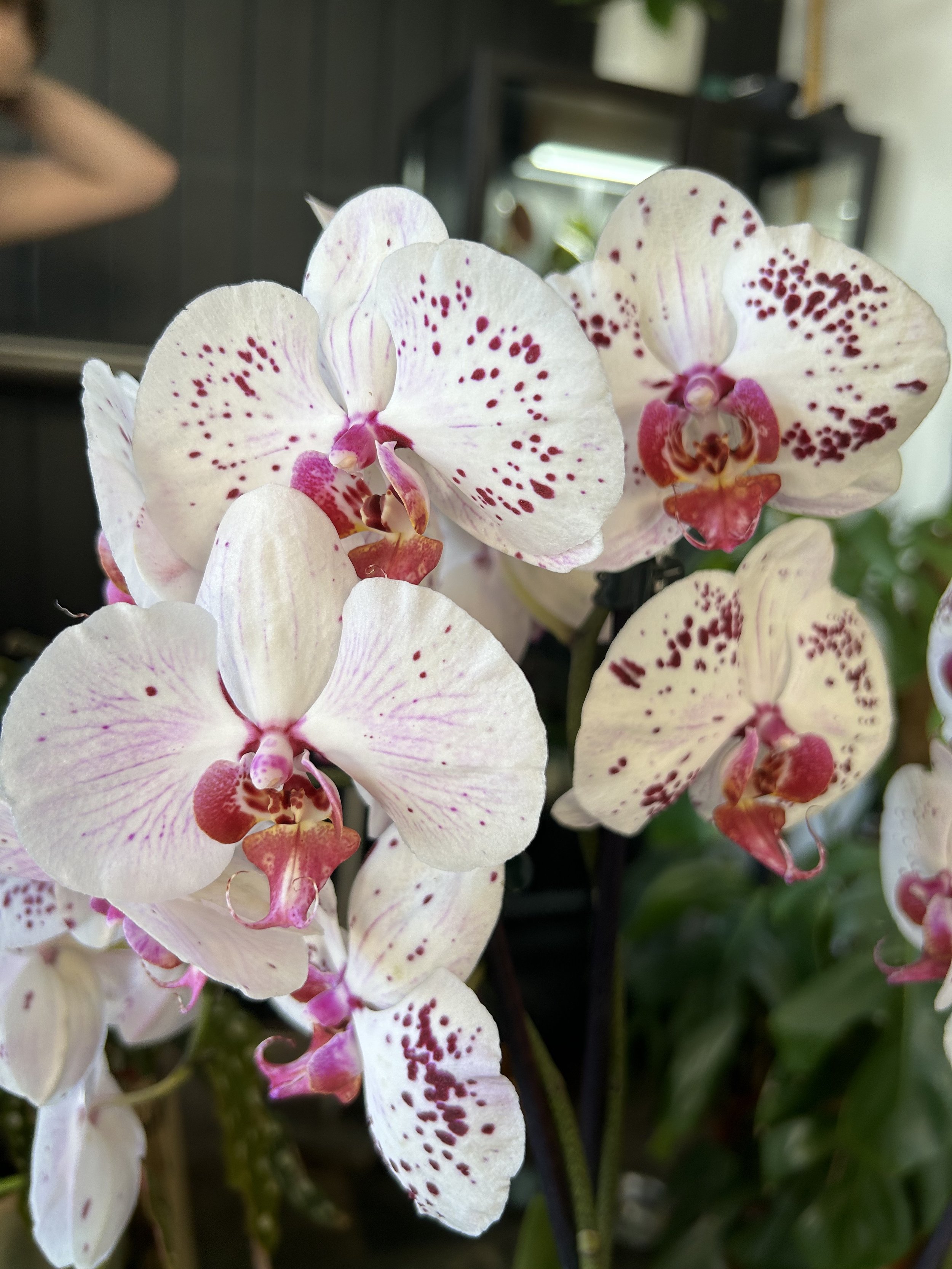
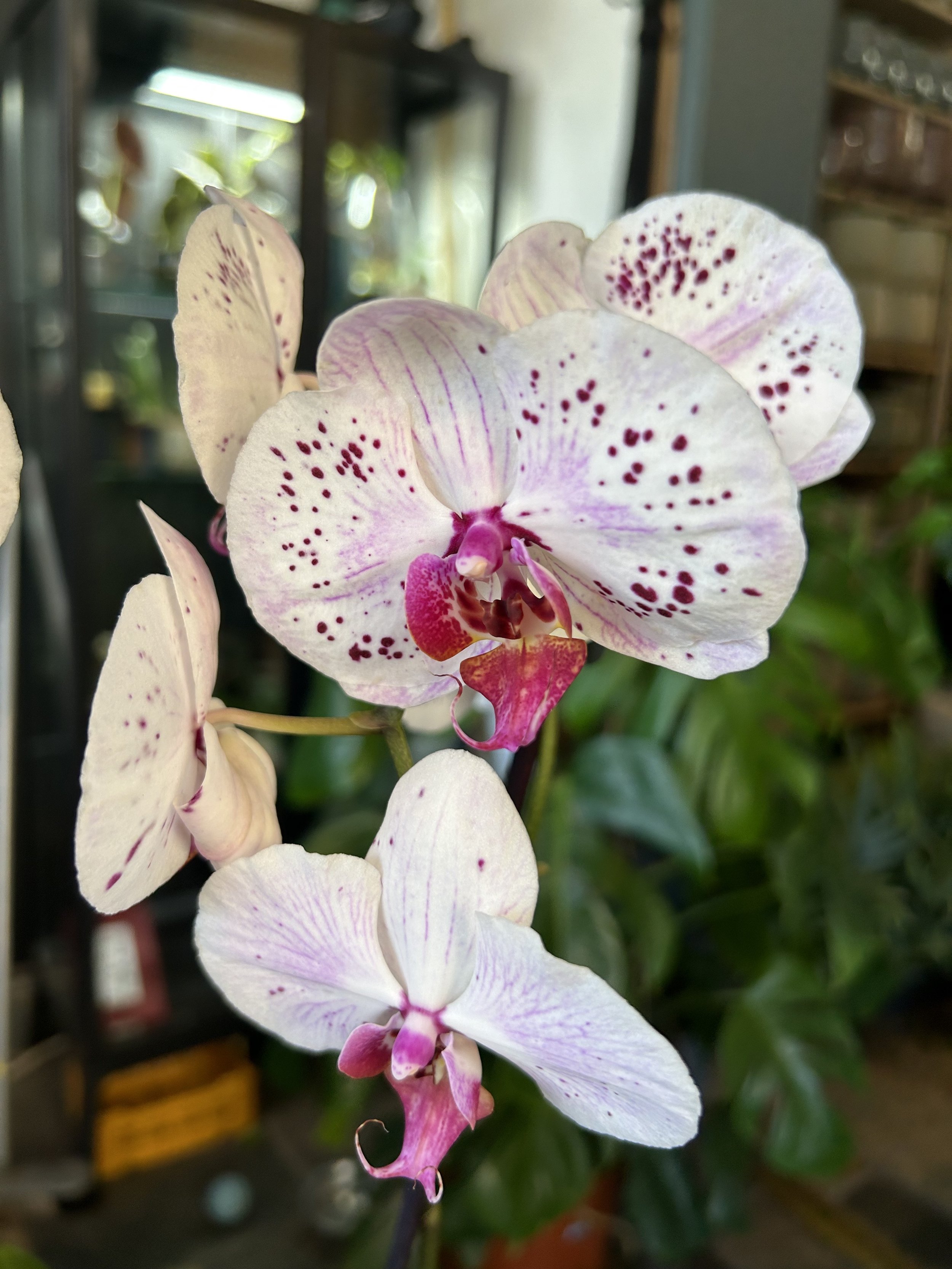
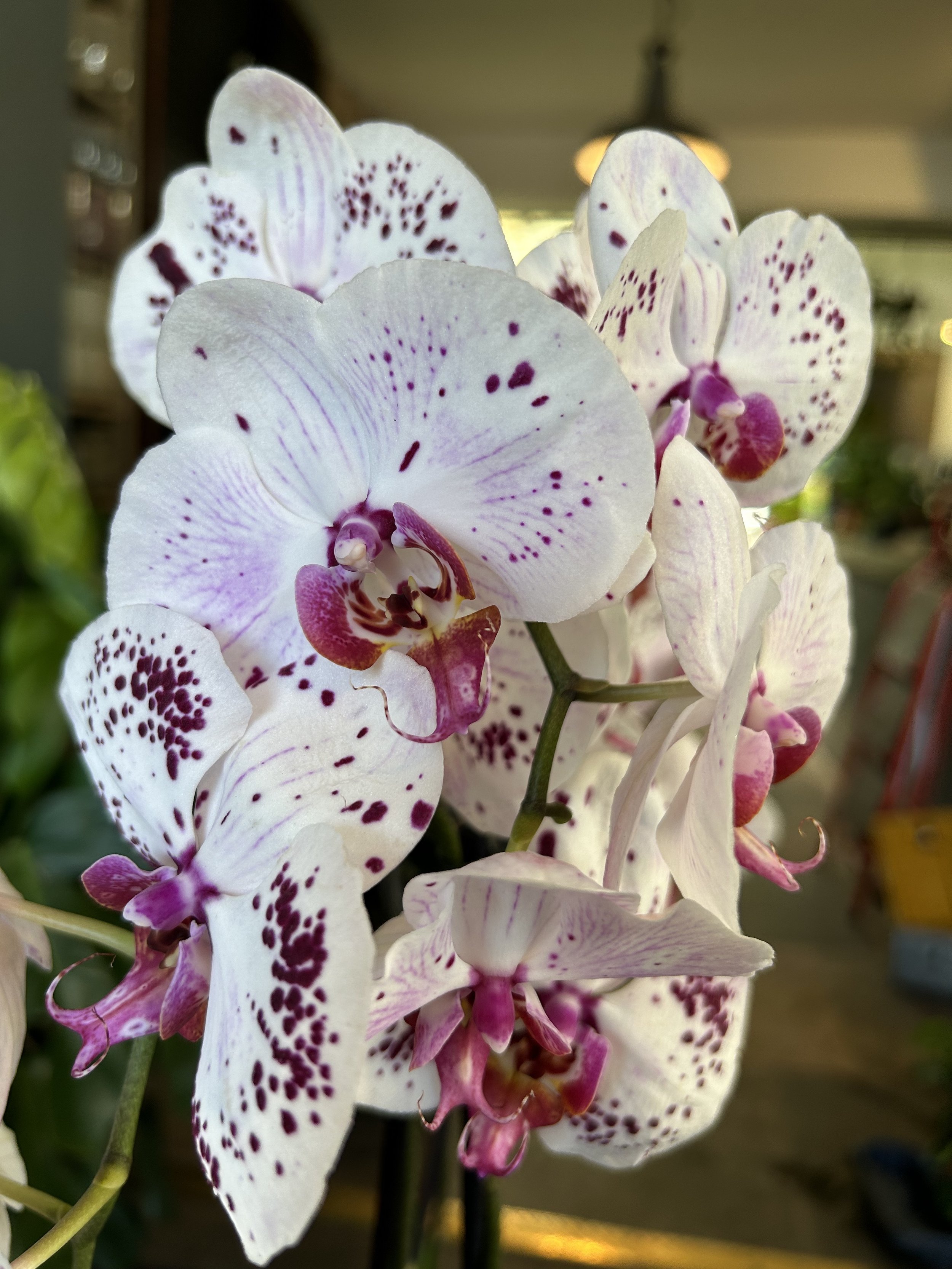
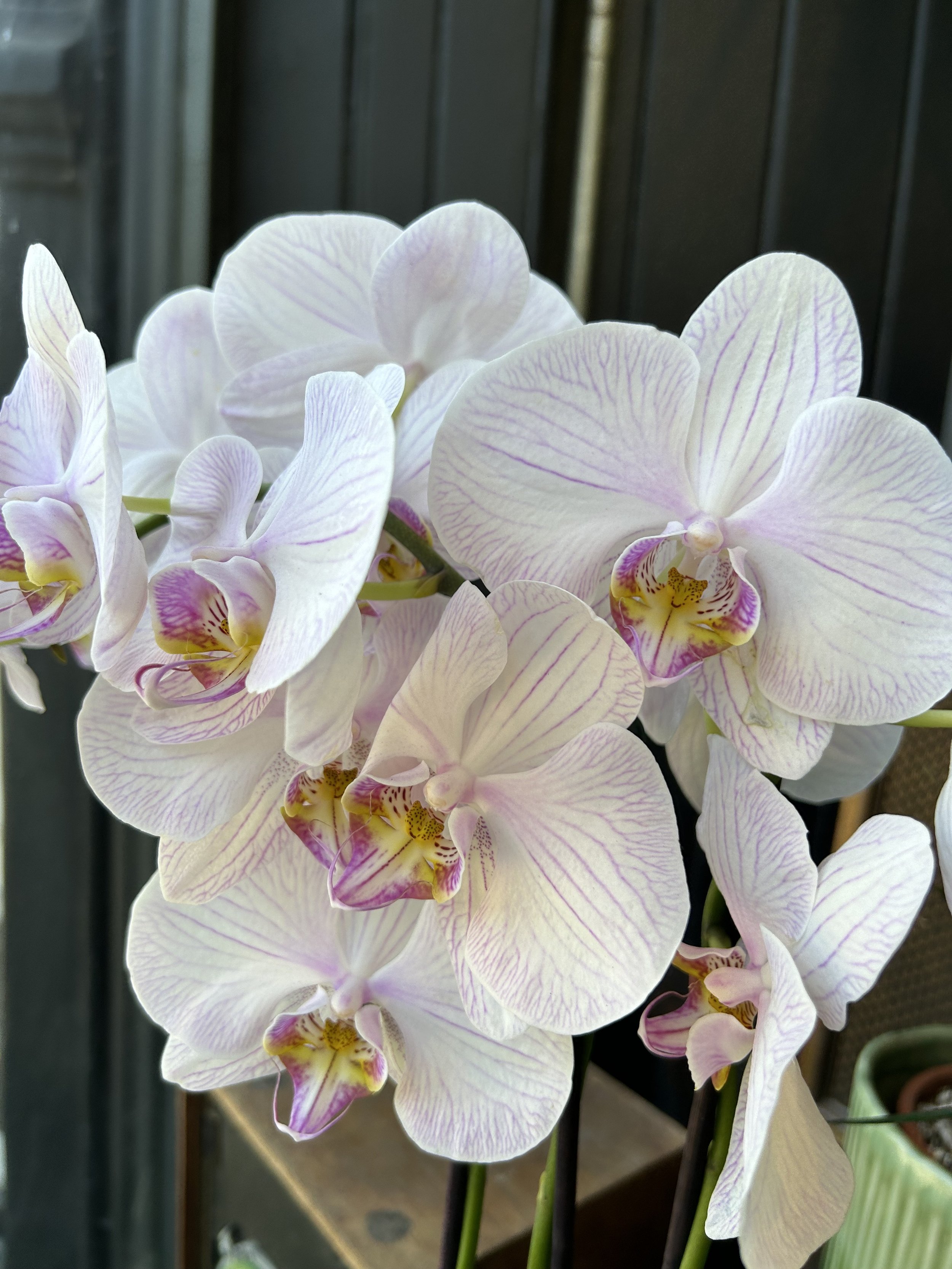
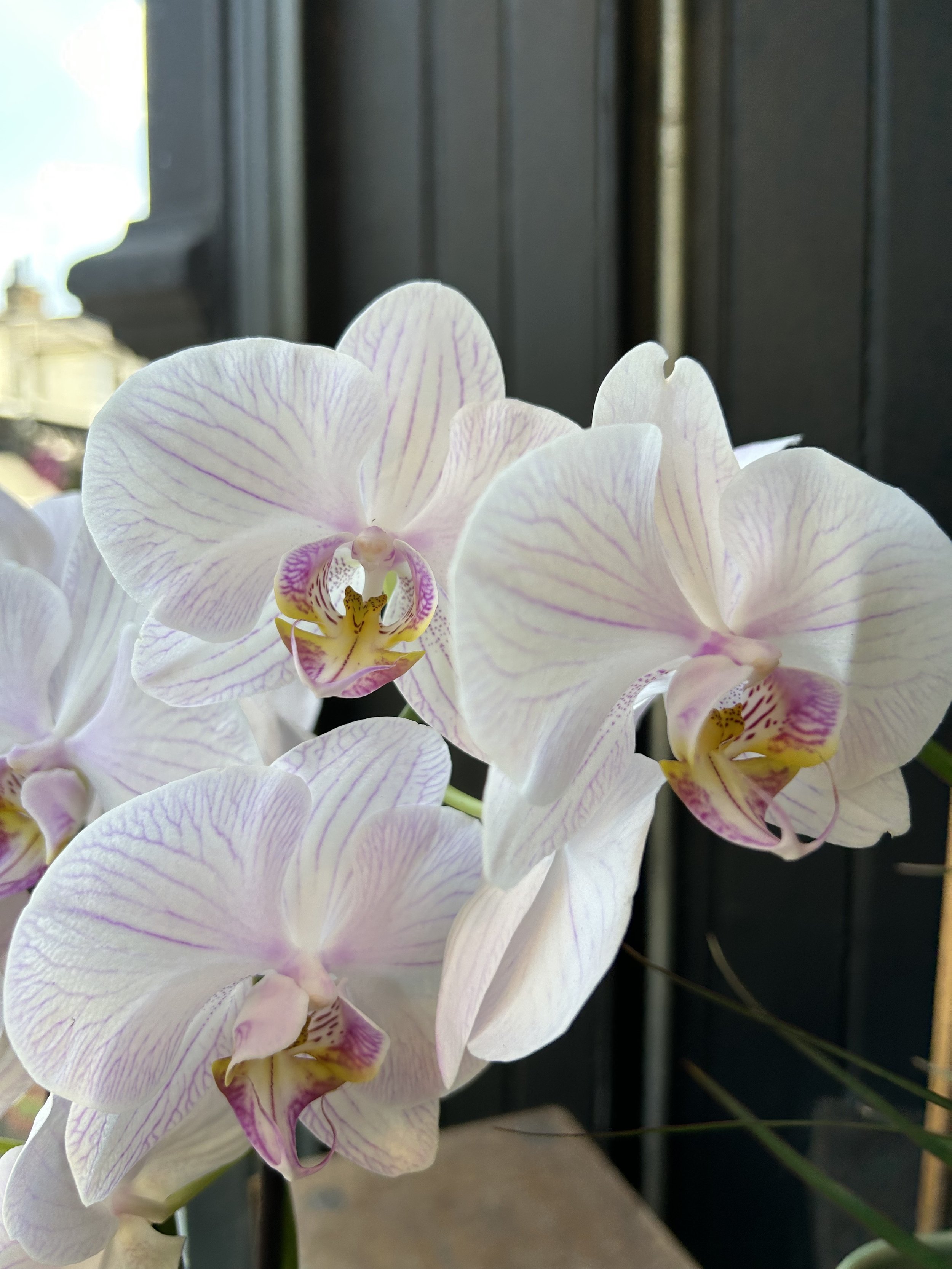
Quick plant check up
Yellow leaves
If the orchid's leaves start to turn yellow, it's a sign of overwatering. Reduce watering and check the soil's moisture level to restore the plant's health.
No flowers
If the orchid is not blooming, it might not be getting enough light or nutrients. Move the plant to a brighter location or add some orchid fertiliser to encourage new growth.
Wilting flowers
If the orchid's flowers start to wilt, it might be an issue with humidity levels or dehydration. Mist the plant with water regularly or water more frequently to restore the blooms' health.





